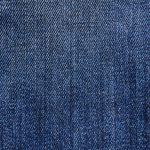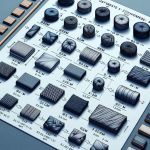Are you wondering what makes a fabric truly premium? Look no further!
In this article, we’ll explore the top 10 factors that determine the quality of fabric.
From fiber type and thread count to weave or knit structure and finishing techniques, we’ll uncover the secrets behind premium fabrics.
Whether you prefer natural or synthetic fibers, durability or breathability, this guide will help you make informed decisions when choosing your next high-quality fabric.
Table of Contents
Fiber Type
When considering premium fabric quality, one important factor to consider is the type of fiber you choose. The fiber blend plays a crucial role in determining the overall quality and performance of the fabric. Different fibers have unique properties that affect the fabric’s texture, durability, and comfort.
The choice of fiber blend can significantly impact the fabric’s texture. Natural fibers like cotton and silk have a soft and luxurious feel, making them ideal for high-quality fabrics. On the other hand, synthetic fibers like polyester and nylon offer a smooth and sleek texture, which is often used in performance fabrics.
Additionally, the type of fiber used affects the fabric’s durability. Natural fibers are known for their strength and longevity. They can withstand daily wear and tear, making them a popular choice for long-lasting fabrics. Synthetic fibers, on the other hand, are often engineered to be more durable and resistant to wrinkles, fading, and pilling.
Thread Count
When it comes to thread count, it’s important to be aware of misleading marketing tactics. Don’t be fooled by high numbers, as quality is more important than quantity.
Instead, focus on factors that contribute to fabric durability, such as the type of fiber used and the weave of the fabric.
Misleading Thread Count
While considering premium fabric quality, it’s important for you to be aware of the misleading nature of thread count. Many manufacturers use misleading marketing techniques to promote higher thread count as an indicator of better quality fabric. However, thread count alone doesn’t determine the overall quality of the fabric.
Here are four reasons why thread count can be misleading:
-
Inconsistent fabric quality standards: Different manufacturers may have different standards for counting threads, leading to inconsistencies in the reported thread count.
-
Use of multi-ply yarns: Some manufacturers use multi-ply yarns, where multiple threads are twisted together to artificially increase the thread count without actually improving the fabric quality.
-
Lower quality materials: A high thread count doesn’t guarantee the use of high-quality materials. Manufacturers may use lower-grade materials with a higher thread count to give the appearance of quality.
-
Fabric finish: The finish applied to the fabric can also affect the perceived thread count. Some finishes can make the fabric feel smoother, giving the illusion of a higher thread count.
Therefore, it’s important to consider other factors such as fiber quality, weave, and finishing techniques, rather than relying solely on thread count when assessing the overall quality of premium fabrics.
Quality Over Quantity
To truly assess premium fabric quality, prioritize the significance of quality over quantity when it comes to thread count. While thread count is often used as a measure of fabric quality, it can be misleading. Manufacturers may inflate thread count numbers by using thinner threads or by counting multi-ply threads as multiple threads.
Instead, focus on quality control and sustainable manufacturing practices. Look for fabrics that undergo rigorous quality checks at every stage of production. This ensures that only the best materials and techniques are used, resulting in a fabric that’s durable and long-lasting.
Additionally, consider fabrics that are manufactured using sustainable methods, such as those that prioritize environmental responsibility and ethical practices. By valuing quality over quantity, you can ensure that you’re investing in premium fabric that will truly stand the test of time.
Fabric Durability Factors
One key factor in determining the premium quality of fabric is the thread count, which directly impacts the fabric’s durability. Here are four important aspects to consider when it comes to fabric durability factors:
-
Fiber strength: The strength of the fibers used in the fabric is crucial in determining its durability. Fabrics made from strong fibers, such as cotton or linen, tend to last longer and withstand wear and tear.
-
Thread count: A higher thread count means more threads are woven into each square inch of fabric. This leads to a tighter weave and increased durability. Fabrics with a higher thread count are less likely to tear or develop holes.
-
Fabric lifespan: The durability of fabric is directly related to its lifespan. Fabrics with a higher thread count and strong fibers tend to have a longer lifespan, making them a better investment in the long run.
-
Care and maintenance: Proper care and maintenance can also contribute to the fabric’s durability. Following the recommended cleaning instructions and avoiding harsh chemicals or excessive heat can help prolong the fabric’s lifespan.
Weave or Knit Structure
What role does the weave or knit structure play in determining the quality of premium fabric? The weave or knit structure of a fabric is a crucial factor in determining its overall quality and performance. It directly affects the fabric’s aesthetics and can greatly impact its durability and comfort. The way the fibers are interlaced or looped together can create different patterns and textures, giving the fabric its unique look and feel.
| Weave or Knit Structure | Description | Characteristics |
|---|---|---|
| Plain Weave | The most basic and common weave structure where the weft thread passes alternately over and under the warp thread. | – Balanced and strong |
- Smooth surface
- Tendency to wrinkle |
| Twill Weave | Characterized by a diagonal pattern created by interlacing the weft thread over one or more warp threads. | – Durable and resistant to wear - Textured surface
- Less prone to wrinkling |
| Satin Weave | The weft thread passes over multiple warp threads, creating a smooth and lustrous surface with a slight sheen. | – Luxurious and elegant - Soft and smooth
- Prone to snagging |
Different weave or knit structures offer different benefits and drawbacks. The choice of weave or knit structure depends on the intended use of the fabric and the desired aesthetic and functional qualities. By understanding the role of weave or knit structure in determining fabric quality, you can make more informed decisions when selecting premium fabrics for your projects.
Finishing Techniques
Now let’s delve into the importance of utilizing proper finishing techniques when determining the quality of premium fabric. Finishing techniques play a crucial role in enhancing the overall look, feel, and durability of the fabric.
Here are four reasons why paying attention to finishing techniques is essential:
-
Fabric softness: One of the primary goals of finishing techniques is to create a soft and luxurious feel to the fabric. Through processes like brushing or enzyme treatments, the fabric is made smoother and more comfortable against the skin.
-
Improved durability: Finishing techniques such as mercerization or singeing help strengthen the fabric fibers, making them more resistant to wear and tear. This ensures that the fabric retains its quality for a longer period.
-
Enhanced appearance: Finishing techniques like calendaring or pressing can give the fabric a polished and refined look. These techniques help to reduce wrinkles and creases, giving the fabric a smooth and visually appealing finish.
-
Special properties: Certain finishing techniques can impart special properties to the fabric, such as water resistance or flame retardancy. These techniques add value to the fabric, making it suitable for specific applications or environments.
Colorfastness
When it comes to premium fabric quality, colorfastness is a crucial factor to consider. The stability of the dye used plays a significant role in determining how well the fabric retains its color over time.
Various testing methods are employed to assess the colorfastness of fabrics, ensuring that they meet quality standards.
Ultimately, the colorfastness of a fabric directly impacts its longevity, making it an essential aspect to evaluate when choosing high-quality materials.
Dye Stability Importance
To ensure premium fabric quality, you need to prioritize dye stability, which refers to the colorfastness of the fabric. This is essential because it determines how well the color of the fabric will hold up over time and through various conditions.
Here are four reasons why dye stability is important:
-
Long-lasting color: Dye stability testing ensures that the fabric’s color remains vibrant and doesn’t fade easily, even after repeated washing or exposure to sunlight.
-
Resistance to fading: Colorfastness standards help guarantee that the fabric’s color doesn’t bleed or transfer onto other fabrics, ensuring that your clothes stay vibrant and stain-free.
-
Durability: Fabrics with good dye stability are less likely to show signs of wear and tear, maintaining their appearance and quality for a longer period.
-
Customer satisfaction: By prioritizing dye stability, you can provide customers with high-quality fabrics that retain their color and appearance, resulting in greater satisfaction and loyalty.
Testing Methods Used
One important step in assessing the dye stability of fabric is the use of specific testing methods. These methods involve the use of specialized testing equipment and adhere to specific testing standards.
Colorfastness, which refers to the ability of a fabric to retain its color when exposed to various conditions, is a critical factor in determining the quality of a fabric. To ensure accurate results, testing equipment such as spectrophotometers, lightboxes, and crockmeters are used. These instruments help measure colorfastness against factors like light, washing, rubbing, and perspiration.
Additionally, testing standards set by organizations like the American Association of Textile Chemists and Colorists (AATCC) and the International Organization for Standardization (ISO) provide guidelines for conducting these tests consistently and reliably.
Impact on Fabric Longevity
Assessing the dye stability of fabric through specific testing methods is crucial for determining the impact of colorfastness on fabric longevity. Colorfastness refers to the ability of a fabric to retain its color over time and through various care practices. The impact of colorfastness on fabric longevity is significant, as it directly affects both fabric care and aesthetics.
Here are four key points to consider:
-
Fade resistance: Fabrics with good colorfastness are less likely to fade, ensuring that they maintain their vibrant appearance even after repeated washing or exposure to sunlight.
-
Durability: Colorfast fabrics tend to be more durable, as the dye molecules are properly bonded to the fabric fibers, making them less susceptible to wear and tear.
-
Easy maintenance: Fabrics with high colorfastness require less effort and special care during laundering, making them convenient and practical choices for everyday use.
-
Enhanced aesthetics: Colorfastness contributes to the overall visual appeal of fabrics, ensuring that they retain their original color and appearance for a longer period, enhancing the aesthetic value of garments and home textiles.
Understanding the impact of colorfastness on fabric longevity is essential in choosing high-quality fabrics that will maintain their beauty and integrity over time.
Weight and Thickness
When evaluating premium fabric quality, a key consideration is the weight and thickness of the material. The weight of the fabric refers to how heavy or light it feels, while the thickness refers to how thin or thick it is. These factors play a crucial role in determining the overall quality and performance of the fabric.
Fabric weight affects its durability and suitability for different purposes. A heavier fabric is generally considered more durable and long-lasting. It can withstand regular wear and tear without losing its shape or integrity. On the other hand, a lighter fabric may be more suitable for clothing that requires a flowy and airy feel.
The thickness of the fabric also contributes to its overall quality. A thicker fabric tends to have better insulation properties and can provide warmth in colder weather. It also tends to have better draping abilities, meaning it falls and hangs more gracefully. Thinner fabrics, on the other hand, are often preferred for lightweight and breathable garments.
In addition to weight and thickness, fabric texture and drape are also important factors to consider when evaluating premium fabric quality. The texture refers to the physical feel of the fabric, such as smooth, rough, or soft. The drape refers to how the fabric falls and hangs when draped over the body or furniture.
Natural Vs. Synthetic Fibers
When it comes to fabric quality, understanding the difference between natural and synthetic fibers is crucial.
Natural fibers, such as cotton and silk, offer excellent performance in terms of breathability and comfort.
On the other hand, synthetic fibers like polyester and nylon are known for their durability and resistance to wrinkles and shrinkage.
Performance of Natural Fibers
You can compare the performance of natural fibers to synthetic fibers by evaluating their durability, breathability, and comfort.
Here’s a breakdown of how natural fibers fare against synthetic ones in these aspects:
-
Durability: Natural fibers like cotton and linen have good tensile strength, making them resistant to wear and tear. However, synthetic fibers like polyester and nylon tend to have better overall durability and can withstand repeated use without losing their shape or strength.
-
Breathability: Natural fibers have excellent breathability, allowing air to circulate and moisture to evaporate, keeping you cool and comfortable. Synthetic fibers, on the other hand, are less breathable and can trap heat and moisture, leading to discomfort.
-
Comfort: Natural fibers offer a soft and luxurious feel against the skin. They’re hypoallergenic and less likely to cause skin irritation. Synthetic fibers can feel rougher and less comfortable, especially for individuals with sensitive skin.
-
Fabric Longevity: Natural fibers tend to have a shorter lifespan compared to synthetic fibers. They’re prone to fading, shrinking, and stretching over time. Synthetic fibers, on the other hand, have better resistance to these issues and can maintain their appearance and shape for longer.
When considering fiber performance, fabric longevity, and overall comfort, both natural and synthetic fibers have their advantages and disadvantages. It ultimately comes down to personal preference and the specific needs of the garment or textile being used.
Durability of Synthetic Fibers
The durability of synthetic fibers outperforms that of natural fibers in terms of wear and tear, shape retention, and overall strength.
Synthetic fiber properties contribute to their advantage in terms of durability. Synthetic fibers are made from man-made materials and are engineered to be strong and resilient. They’re highly resistant to stretching, shrinking, and wrinkling, making them ideal for garments and textiles that undergo frequent use and washing.
Unlike natural fibers, synthetic fibers have a higher tensile strength, meaning they can withstand greater pressure and tension without breaking or tearing. Additionally, synthetic fibers have excellent shape retention, meaning they can maintain their original form and structure even after repeated use and washing.
Durability and Strength
One key factor that determines premium fabric quality is the overall durability and strength of the material. When considering the durability of a fabric, it’s important to assess its ability to withstand wear and tear over time. This can be evaluated through durability testing, which involves subjecting the fabric to various stresses and strains to simulate real-life conditions. By conducting such tests, manufacturers can ensure that their fabrics are capable of withstanding repeated use without losing their integrity.
Fabric longevity is another important aspect to consider when assessing the durability and strength of a material. A fabric that has a long lifespan is a clear indication of its superior quality. Factors such as the type of fibers used, the weaving technique, and the overall construction of the fabric can greatly impact its longevity. A well-constructed fabric will be able to resist fading, pilling, and tearing, making it more durable and long-lasting.
To summarize, the durability and strength of a fabric are crucial factors in determining its quality. A premium fabric should be able to pass durability testing and demonstrate excellent fabric longevity. By investing in fabrics that exhibit these qualities, you can ensure that your garments and upholstery will stand the test of time.
Breathability and Comfort
When assessing the premium quality of fabric, it is important to consider its breathability and comfort, as these factors greatly contribute to the overall satisfaction of the wearer. Breathable fabrics allow air to circulate, preventing the buildup of heat and moisture, while comfortable fabrics provide a pleasant tactile experience against the skin.
One key aspect of breathability is moisture wicking properties. Fabrics with moisture-wicking capabilities are able to pull sweat away from the body, keeping the wearer dry and comfortable. This is particularly beneficial during physical activities or in hot and humid climates.
Another important factor in fabric quality is thermal regulation. Fabrics that can effectively regulate body temperature help to keep the wearer cool in warm weather and warm in cold weather. This is achieved by allowing heat to escape when it’s hot and trapping heat when it’s cold.
To better understand the relationship between breathability, comfort, and fabric quality, consider the following table:
| Breathability | Comfort | |
|---|---|---|
| Moisture Wicking | Draws sweat away from the body | Keeps the wearer dry and comfortable |
| Thermal Regulation | Regulates body temperature effectively | Ensures comfort in various weather conditions |
Origin and Manufacturing Process
Consider the importance of understanding the origin and manufacturing process of the fabric you choose when determining its premium quality. The way a fabric is made and where it comes from can greatly impact its overall quality and performance. Here are four key points to consider:
-
Origin: The country or region where the fabric is produced can affect its quality. Certain countries have a reputation for producing high-quality fabrics due to their expertise and traditional manufacturing techniques.
-
Manufacturing Process: The way the fabric is manufactured plays a crucial role in its quality. Different processes, such as weaving, knitting, or spinning, can result in different levels of durability, texture, and overall appearance.
-
Fiber Type: The type of fiber used in the fabric also affects its quality. Natural fibers like cotton and silk are known for their softness and breathability, while synthetic fibers like polyester and nylon offer durability and moisture-wicking properties.
-
Quality Control: The manufacturing process should include strict quality control measures to ensure consistent fabric quality. This includes checks for defects, colorfastness, strength, and overall performance.
Frequently Asked Questions
How Do I Determine the Exact Thread Count of a Fabric?
To determine the exact thread count of a fabric, you can use a thread count tool or count the number of threads per inch. Remember, the thread count is important as it reflects the quality and durability of the fabric.
What Are the Most Common Finishing Techniques Used in Premium Fabric Production?
To achieve premium fabric quality, common finishing techniques include processes like mercerization and calendering. Innovations in textile manufacturing technology have led to advancements in finishes such as nanotechnology and laser engraving.
Are Natural Fibers Always Better Than Synthetic Fibers in Terms of Fabric Quality?
Natural fibers are not always better than synthetic fibers in terms of fabric quality. Both types have their pros and cons. Natural fibers offer breathability and comfort, while synthetic fibers provide durability and resistance to wrinkles.
Can the Weight and Thickness of a Fabric Affect Its Overall Quality?
Weight and thickness can greatly impact a fabric’s overall quality. The weight determines its durability, while the thickness affects its drapeability. So, when considering fabric quality, these factors should be taken into account.
What Factors Contribute to the Origin and Manufacturing Process of Premium Fabrics?
Factors like sustainability practices and dyeing techniques greatly contribute to the origin and manufacturing process of premium fabrics. These practices ensure that the fabric is produced in an environmentally-friendly manner and with high-quality dyeing methods.
- Choosing the Right Fabrics for Babies - July 20, 2024
- Impact of Fabrics on Skin Health - July 20, 2024
- Benefits of Antimicrobial Fabrics - July 20, 2024






